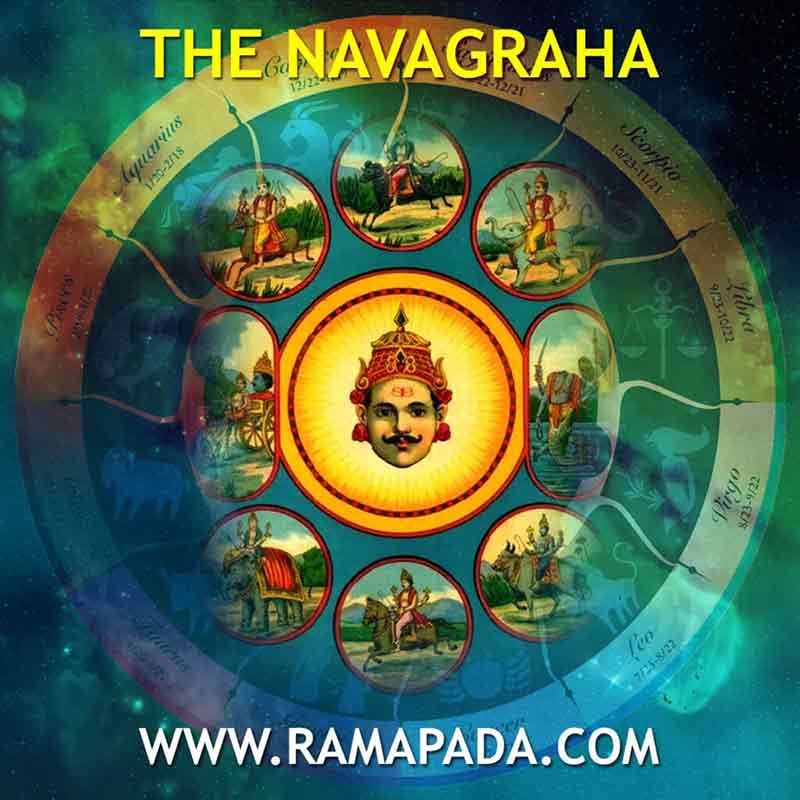Hindu beliefs credit nine celestial bodies and their linked deities, the Navagraha, with shaping human lives and the world around us. Translated, it means “nine graspers” (nava, nine; graha, seize or grasp).
Celestial Bodies and Divine Associations
The Navagraha encompasses more than just the planets orbiting our sun. They include:
- Surya (Sun): The giver of life, light, and energy.
- Chandra (Moon): Associated with emotions, the mind, and intuition.
- Mangala (Mars): represents courage, passion, and drive.
- Budha (Mercury): governs intellect, communication, and adaptability.
- Brihaspati (Jupiter): The teacher, signifying wisdom, knowledge, and prosperity.
- Shukra (Venus): evokes love, beauty, and pleasure.
- Shani (Saturn): represents discipline, limitations, and karma.
- Rahu and Ketu: These are not planets but the ascending and descending nodes of the Moon, associated with eclipses and unforeseen events.
Influence on Astrology and Daily Life
Hindu astrology, or Jyotish, places great importance on the Navagraha. These celestial bodies, according to Hindu astrology, are believed to influence an individual’s personality, strengths, weaknesses, and life path by their position at the time of birth. Understanding the influence of each grain can provide valuable insights for navigating life’s challenges and opportunities.
The Navagraha is also linked to the seven days of the week. Surya governs Sunday, Chandra governs Monday, and so on, establishing an astrological connection to our daily lives.
Worship and Appeasement of The Navagraha
Many Hindus believe that appeasing the Navagraha can bring good fortune and mitigate negative influences, as per the best astrologer in Kolkata. Devotees perform specific pujas (prayers) and rituals associated with each deity. Hindu temples frequently house shrines dedicated to it, each deity depicted with specific attributes and symbolism.
Enduring Legacy of The Navagraha
The Navagraha represents the confluence of astronomy, astrology, and religion in Hinduism. Their study offers a unique perspective on the cosmos and human existence. Even today, it continues to influence various aspects of Hindu culture, art, and daily practices.

